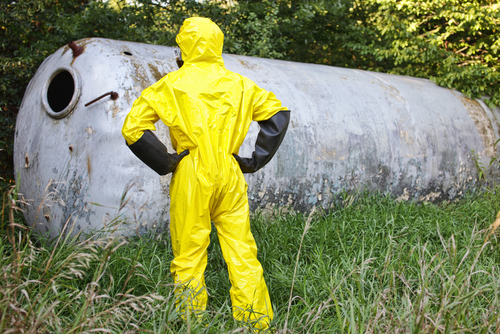Taking immediate and appropriate action after a chemical spill can save lives. If hazardous chemicals are present at your facility, train employees in how to react should an emergency occur. Today’s Advisor gives you a basic outline for a chemical spill training session.

Here are some key actions employees need to be trained to take if they identify a chemical spill:
- Once you have identified a spill and safely evacuated the spill’s immediate area, it is safe to call for help.
- Contact your company’s emergency response team by following the procedures outlined in the Emergency Response Plan.
- Request additional resources if necessary.
- Ask for instructions on what you should do until help arrives.
When reporting the spill, you need to provide responders with some vital facts on the ground, such as:
- Information to the emergency response coordinator, including the name(s) of the chemical(s) involved in the release and the hazards of the chemical(s).
- Description of the location of the release and how it has released, such as a gas into the air, a liquid spray, or a liquid flowing over the ground.
- Estimation of the quantity of released material.
- Description of the site conditions such as fire, fumes, and smoke. Describe if the chemical release has reached or soon will reach environmentally sensitive areas.
- Description of whether the area has been evacuated and if there are victims of the release that will need rescue or emergency medical treatment.
Great news! BLR’s renowned Safety.BLR.com® website now has even more time-saving features. Take our no-cost site tour! Or better yet, try it at no cost or obligation for a full 2 weeks.
To protect yourself and others:
- Once you have determined that a release of a hazardous chemical has occurred, report it to others in the immediate area so that they can evacuate with you.
- Signal an alarm or yell to warn the other employees.
- Retreat to a predetermined assembly area or to a shelter-in-place that is a safe distance from the spill or release.
How to secure the area:
- Once you have reported the spill or release to the response personnel, secure the area around the release to keep unauthorized personnel out while waiting for the response team to arrive.
- Use caution tape, rope, cones, and barricades to create a safe zone around the area. Your emergency response plan might call for the use of specific equipment; however, you may be required to barricade with whatever is available.
Up to this point, a first responder at the awareness level (this is a level of emergency response training) has been in control of the spill scene. Once response personnel arrive, they will take over responsibility for the incident.
Your one-stop safety management resource, available 24/7. Go here to take a no-cost site tour or here to try it in your own office!
Customize your training around the answers to such questions as, “what reporting procedures are used at your company?” and “do you respond to spills in-house?”
The above information comes from BLR’s presentation “HAZWOPER: First Responders, Awareness Level.”
Why It Matters
- Chemical spills can cause great damage in the workplace and in the community.
- As such, they need to be immediately identified and reported so that they can be contained as quickly as possible.
- Training is key to stopping chemical spills in their tracks.
